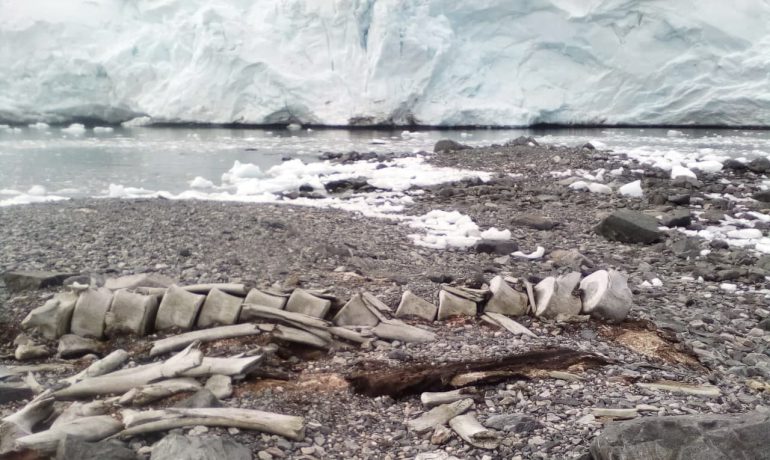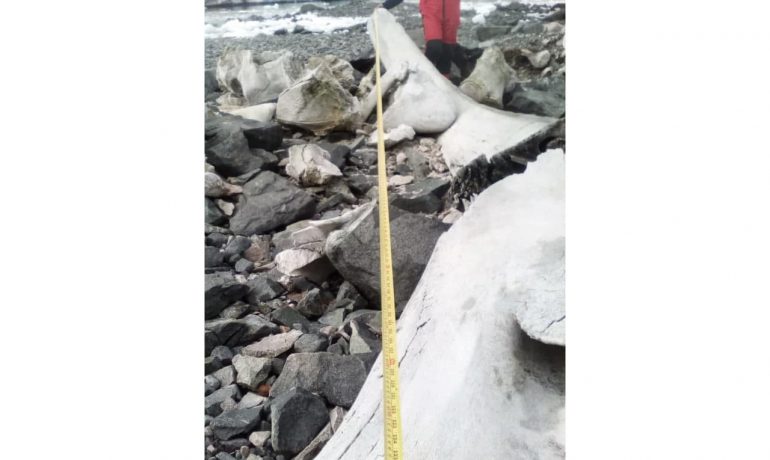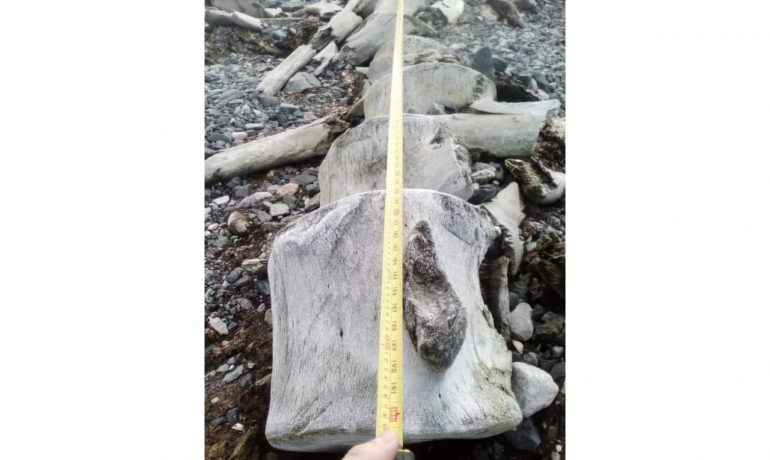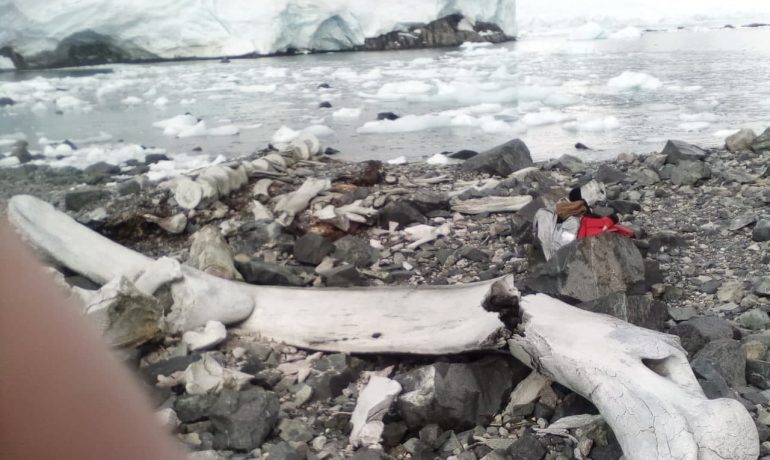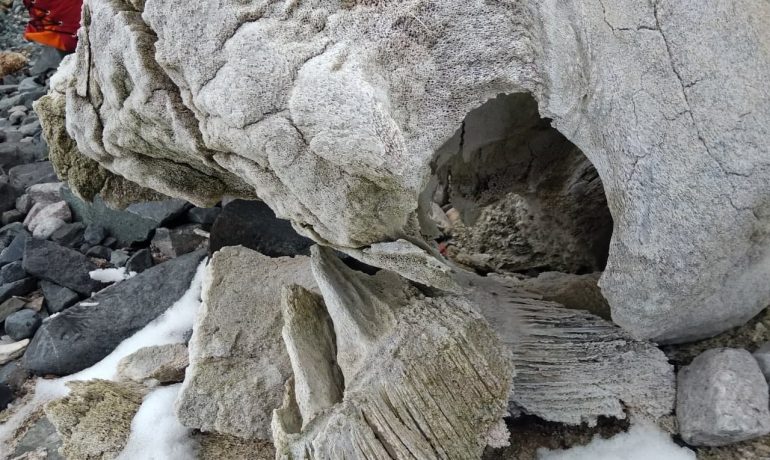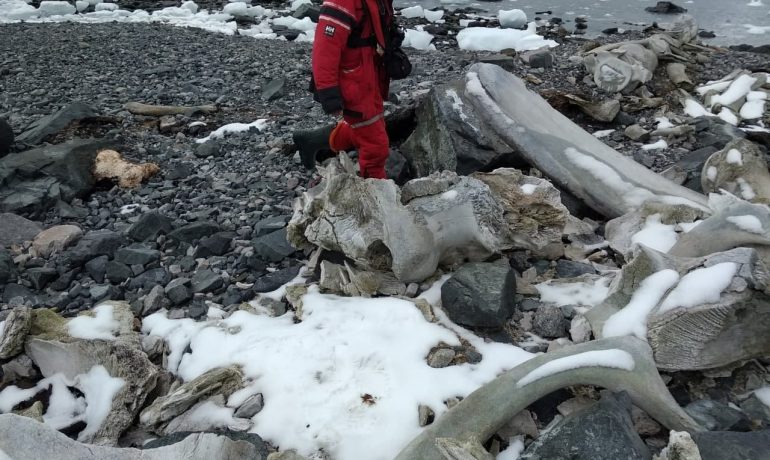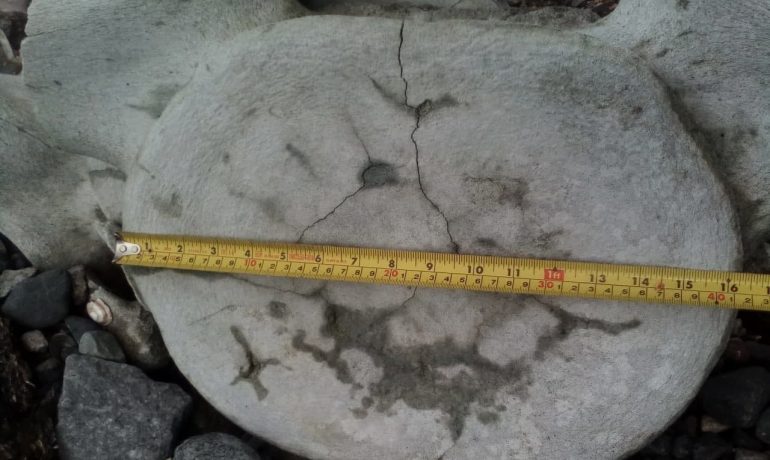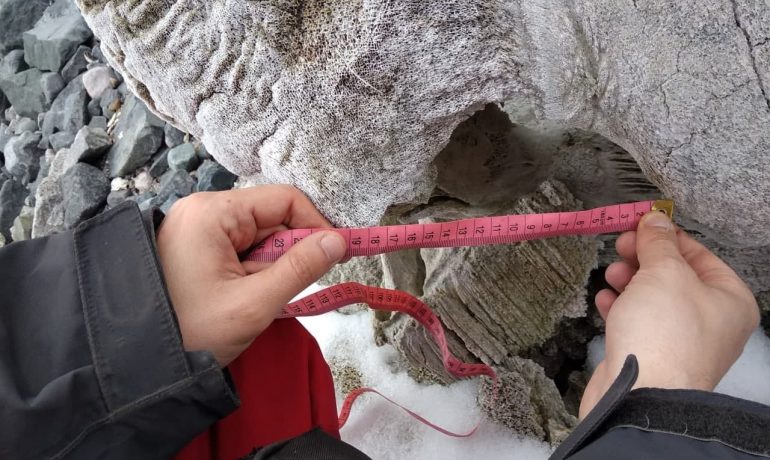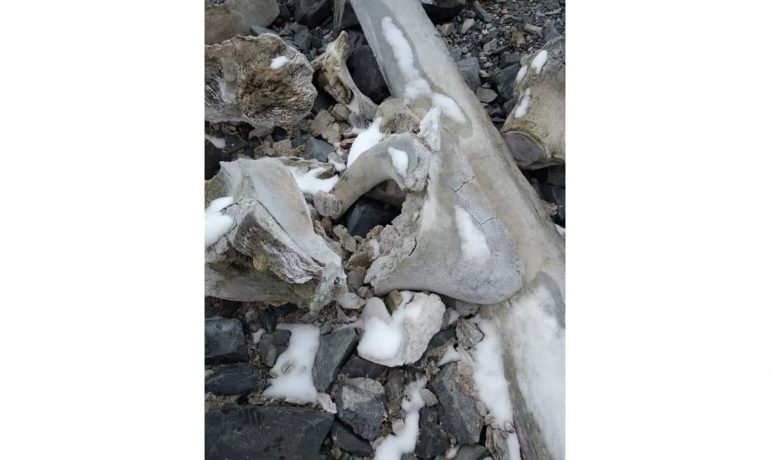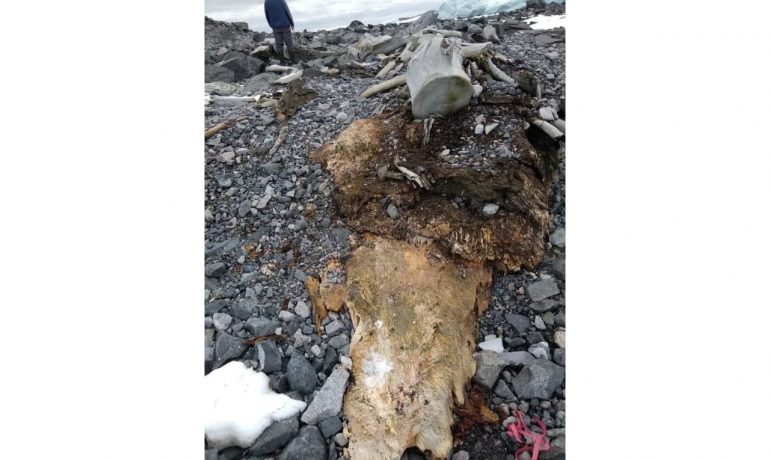Maybe you remember we wrote about the studies of the rests of the mysterious whale in Antarctica? We mean the whale, whose bones for many years laid in the Rasmussen Island not far from our station.
Finally, scientists of NASC have obtained the results of radiocarbon analysis of the samples, done in the laboratory in Poznan, Poland. This study has proven the age of the whale’s rests: it is 1350 years (plus / minus 30 years)!
Just imagine, this means that it died in the 7th century, the time of Vikings and Maya civilization, three centuries before Olga and Vladymyr, rules of Kyiv Rus😲
Regarding the species, the scientists identified that it is the blue whale, the biggest whale, and the biggest animal on the planet in general. By the length of the jaw bone, it was defined that this whale was at least 26 m. It belonged to the southern (Antarctic) subspecies – it is the biggest subspecies among the blue whales.
This discovery is very significant, as far as in general in museums there are few dozens of blue whales only and most of them belong to other subspecies. Because of the whale hunting industry by the 1960s, the blue whale got almost extinct. Starting from 1963, this species has been under protection, but because of illegal (namely, Soviet and Japanese) whale hunting industries, the population did not restore. By the mid of 1980s, according to the data of the international whale hunting, there were not more than 200-1400 specimens in the world.
Before the times of whale hunting, the Antarctic blue whale was one of the most numerous – its population was 250-300 thousand specimens.
For scientists, it is important to understand, how the whales looked before such a bloody and deadly human interference in their life. At present, despite all nature conservation efforts, the Antarctic blue whale is still very rare – its population is 1,6-3 thousand specimen (such a large diapason in the assessment shows how little data we have about these marine giants). However, to restore the population to the full extent, it will need at least 200 years more, in conditions of no new threats.
The further research plans for the rests of the whole include genetic analysis, which will allow getting new information about the evolution of the blue what and demography of their ancient, at present destroyed stocks.
All posts about the studies conducted by our scientists of the ice continent, you can find under #ДослідженняАнтарктиди
Thanks for the conducted work and explanations, provided by Dr. Pavlo Goldin, Mr. Oleksandr Yarovuy, and head of the department of biology and ecology Dr. Ivan Parnikoza.
Photo – Oleksandr Yarovuy.


